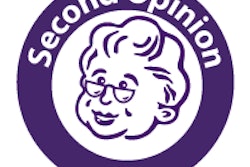
It can be tough to run a breast care center as controversy swirls around the effectiveness of screening mammography. No matter where a facility falls in the debate, putting together a screening program demands hard choices, according to a presentation at the National Consortium of Breast Centers (NCoBC) meeting in Las Vegas.
The goals of an effective breast cancer screening program include finding cancer at its earliest, most treatable stage; reducing callbacks; and increasing the cancer detection rate. Another goal is decreasing the harms of screening -- whether real or imagined -- such as patient anxiety, exam inconvenience, radiation exposure, unnecessary studies or biopsies, and overtreatment, said presenter Dr. Brett Parkinson, director of the breast clinical program at Intermountain Healthcare in Salt Lake City.
The biggest challenge for breast care facilities is balancing best practice with financial constraints.
"The aim is cost containment without a decrease in quality," Parkinson told session attendees.
Breast imagers may have an extensive toolbox that includes conventional 2D mammography, 3D tomosynthesis, whole-breast ultrasound (handheld and automated), and breast MRI, he said. But it can be difficult to determine which supplemental modality is most effective.
"In an ideal world, with 100% sensitivity and specificity, the most effective screening strategy would be to evaluate women with all four modalities, thus ensuring that no cancer would be missed," he said. "MRI alone would be the next best choice. However, the costs of such a program would be prohibitive."
Breast imagers can't make appropriate screening choices without dependable facts about mammography. The problem is that these facts can be controversial, according to Parkinson. He listed some of these points for session participants, both positive and negative.
Positive facts about screening mammography:
- Randomized, controlled clinical trials have shown that screening mammography has decreased breast cancer mortality by 30%.
- Observational studies that consider women who have actually been screened, as opposed to those just "invited" to screen, have demonstrated an even greater benefit.
- Supplemental screening tools such as tomosynthesis, ultrasound, and MRI increase cancer detection rates and most likely decrease mortality.
- The Affordable Care Act mandates coverage for breast cancer screening in women older than 40.
- Early detection leads to a decrease in stage and treatment cost.
Negative facts about screening mammography:
- Not everyone is a fan of mammography or other breast imaging modalities.
- Mammography has a high false-negative rate, particularly in women with dense breast tissue.
- Supplemental screening with other modalities, though shown to be more sensitive in detecting breast cancer, has not demonstrated a decrease in mortality.
- Most supplemental screening tests significantly increase the cost of screening, which has broad implications for public health policies.
- Screening tomosynthesis, ultrasound, and MRI are usually not covered by most insurance plans.
- Out-of-pocket expenses are unacceptable to many patients and providers.
"We can make some reasonable assumptions, such as that supplemental screening probably saves lives, if we consider tumor size, grade, stage, and an acceptable end point for mortality," Parkinson said. "And most women would choose early detection, even if it meant that some cases might be overtreated."
The key to running an effective breast care center and helping patients make informed choices about screening is careful analysis of the medical literature: Evaluate study design, potential conflicts of interest, the number of subjects, inclusion criteria, and selection bias, according to Parkinson.
"Not all screening studies are created equal," he said.
Breast care physicians must also gather data about screening from professional society recommendations and guidelines, in addition to considering workflow issues, patient demographics, and financial concerns.
"Breast imaging should result in excellent patient care, quality outcomes, and reasonable cost," Parkinson said. "But there are some hard choices we have to make."




















